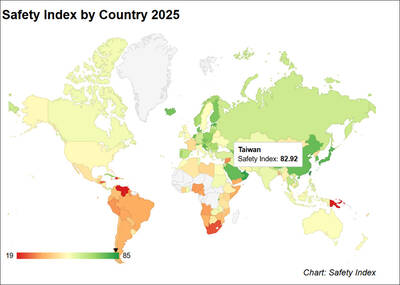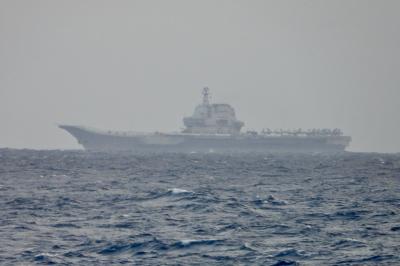American tanks firing shells and heavy machine guns made their deepest incursion yet into this stronghold of a radical cleric. Apparent gunfire slightly damaged one of Shia Islam's holiest shrines, prompting calls for revenge and even suicide attacks.
In response, cleric Muqtada al-Sadr's militiamen attacked the US-led coalition headquarters in Nasiriyah on Friday, trapping international staff and some Italian journalists inside. Explosions and gunfire rocked Karbala, and al-Sadr's top aides threatened to unleash more attacks across the Shiite south and in Baghdad.
"We will fight and defend the holy shrines until our last breath," al-Sadr said in an interview broadcast late Friday by Al-Arabiya television, widely seen throughout the Middle East. "We are not controlling any holy shrine; we are defending these shrines."
Several large explosions and the roar of high-flying aircraft could be heard in Baghdad before dawn yesterday. The US command issued no statement and the cause of the blasts was unknown.
The fighting around Najaf, the most important center of Shiite theology and scholarship, unnerved the country's Shiite majority, including members who have disavowed al-Sadr and worked with US authorities.
Hamid al-Bayati, spokesman for a mainstream Shiite group represented on the US-appointed Iraqi Governing Council, called the fighting in Najaf a "big mistake" that could inflame sectarian passions. He urged both sides to mediate an end to the standoff.
At least four Iraqis were killed and 26 wounded on Friday in Najaf, according to Haidar Raheem Naama, a hospital official. He said most were civilians. One coalition soldier was wounded, US officials said.
At least three militiamen also were killed, and their coffins were brought to the Shrine of Imam Ali for family and friends to pray for their souls.
"America is the enemy of God," fighters shouted.
Explosions and heavy machine-gun fire rocked Najaf for hours, and bands of gunmen carrying assault rifles, rocket-propelled grenades and mortar tubes roamed the city. After a lull, sporadic firing resumed as night fell.
Four holes, each approximately 30cm long and 30cm wide, could be seen on the golden dome of the Imam Ali mosque, burial place of Imam Ali Ibn Abu Talib, the Prophet Muhammad's cousin and son-in-law and the Shiites' most revered saint.
The mosque, in the middle of Najaf, is about 160km south of Baghdad overlooking the world's largest cemetery.
Militia members blamed the Americans for the damage to the mosque, but Brigadier General Mark Kimmitt, the chief US military spokesman in Iraq, said al-Sadr's men were probably responsible: "I can just tell you by the looks of where we were firing and where Muqtada's militia was firing, I would put my money that Muqtada caused it."
During the crackdown on al-Sadr's al-Mahdi Army, US forces have been careful to avoid damaging shrines for fear of enraging Iraq's Shiite majority. They have attacked mosques where insurgents have set up fighting positions.
At a press conference in Baghdad, Kimmitt pointed to a map of Najaf and said a US convoy might have been fired on from the cemetery as it moved near the shrine. If so, those rounds could have hit the shrine, he said.
Kimmitt accused the militia of using religious sites "much like human shields." He said American forces had not initiated the fighting but were responding to attacks by al-Sadr's gunmen.
That did little to assuage the anger of many Shiites in Najaf. By early evening, thousands gathered around the Imam Ali shrine to inspect the damage. Some shook their heads in disbelief. Others mumbled prayers.

AIR SUPPORT: The Ministry of National Defense thanked the US for the delivery, adding that it was an indicator of the White House’s commitment to the Taiwan Relations Act Deputy Minister of National Defense Po Horng-huei (柏鴻輝) and Representative to the US Alexander Yui on Friday attended a delivery ceremony for the first of Taiwan’s long-awaited 66 F-16C/D Block 70 jets at a Lockheed Martin Corp factory in Greenville, South Carolina. “We are so proud to be the global home of the F-16 and to support Taiwan’s air defense capabilities,” US Representative William Timmons wrote on X, alongside a photograph of Taiwanese and US officials at the event. The F-16C/D Block 70 jets Taiwan ordered have the same capabilities as aircraft that had been upgraded to F-16Vs. The batch of Lockheed Martin

GRIDLOCK: The National Fire Agency’s Special Search and Rescue team is on standby to travel to the countries to help out with the rescue effort A powerful earthquake rocked Myanmar and neighboring Thailand yesterday, killing at least three people in Bangkok and burying dozens when a high-rise building under construction collapsed. Footage shared on social media from Myanmar’s second-largest city showed widespread destruction, raising fears that many were trapped under the rubble or killed. The magnitude 7.7 earthquake, with an epicenter near Mandalay in Myanmar, struck at midday and was followed by a strong magnitude 6.4 aftershock. The extent of death, injury and destruction — especially in Myanmar, which is embroiled in a civil war and where information is tightly controlled at the best of times —

Taiwan was ranked the fourth-safest country in the world with a score of 82.9, trailing only Andorra, the United Arab Emirates and Qatar in Numbeo’s Safety Index by Country report. Taiwan’s score improved by 0.1 points compared with last year’s mid-year report, which had Taiwan fourth with a score of 82.8. However, both scores were lower than in last year’s first review, when Taiwan scored 83.3, and are a long way from when Taiwan was named the second-safest country in the world in 2021, scoring 84.8. Taiwan ranked higher than Singapore in ninth with a score of 77.4 and Japan in 10th with

China's military today said it began joint army, navy and rocket force exercises around Taiwan to "serve as a stern warning and powerful deterrent against Taiwanese independence," calling President William Lai (賴清德) a "parasite." The exercises come after Lai called Beijing a "foreign hostile force" last month. More than 10 Chinese military ships approached close to Taiwan's 24 nautical mile (44.4km) contiguous zone this morning and Taiwan sent its own warships to respond, two senior Taiwanese officials said. Taiwan has not yet detected any live fire by the Chinese military so far, one of the officials said. The drills took place after US Secretary